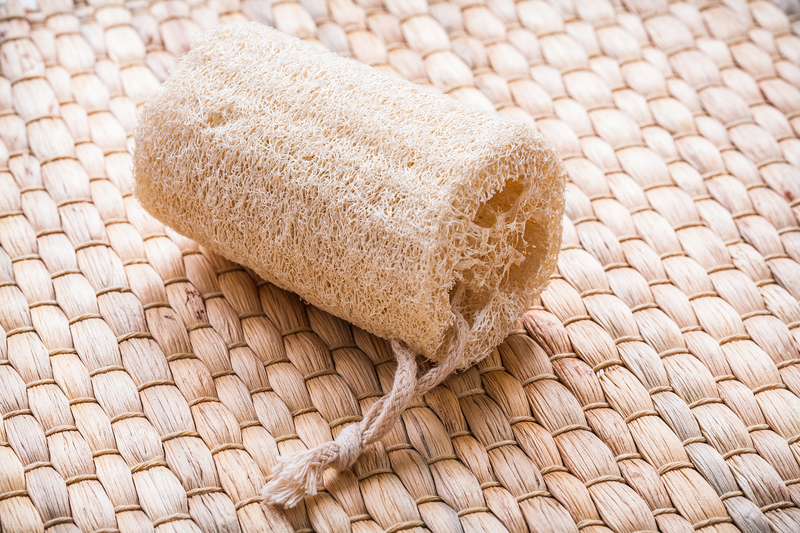Beyond the Surface: Detailed Jewelry Cleaning Tips
Posted on 11/06/2025
Beyond the Surface: Detailed Jewelry Cleaning Tips
Jewelry is more than just an accessory; it holds memories, marks significant milestones, and often becomes a cherished family heirloom. While sparkling new, over time, your favorite pieces can collect dirt, oil, and residue, losing their radiant shine. To maintain their beauty and value, understanding how to clean jewelry properly is crucial. In this comprehensive guide, we'll take you beyond the surface, offering expert jewelry cleaning tips and tricks for every type of adornment.

Why Regular Jewelry Cleaning Matters
Frequent wearing and improper storage expose your jewelry to all sorts of contaminants: sweat, lotions, perfumes, and environmental pollutants. These substances not only dull the appearance but can cause irreversible damage. Regular cleaning not only restores brilliance but extends the life and integrity of your treasured pieces.
- Prevents tarnish and discoloration
- Reduces risk of stone loosening
- Keeps skin healthy by removing bacteria
- Preserves resale and sentimental value
Read on to discover in-depth jewelry cleaning methods for a variety of materials and settings.
Essential Tools for Detailed Jewelry Cleaning
Before diving into the cleaning process, gather the right tools. Using appropriate materials ensures you don't inadvertently scratch or damage your jewelry. Here's a basic toolkit for jewelry maintenance:
- Soft-bristle toothbrush: For removing grime in crevices
- Microfiber/polishing cloth: For gentle drying and buffing
- Bowl of warm water: To soak away debris
- Mild dish soap or specialized jewelry cleaner
- Lint-free cloth: For finishing touches
- Optional: Ultrasonic cleaner (for certain hard gemstones and metals)
Pro Tip:
Never use abrasive sponges, household cleaners, or toothpaste for cleaning jewelry. These can scratch soft metals and stones.
General Steps for Safe At-Home Jewelry Cleaning
- Prepare a cleaning solution: Mix a few drops of mild dish soap with warm (not hot) water.
- Soak the jewelry: Submerge the piece for 15-20 minutes to loosen dirt and oils.
- Gently brush: Using a soft toothbrush, clean intricate areas and crevices.
- Rinse thoroughly: Run under lukewarm water to remove soap residue.
- Dry and buff: Pat dry with a lint-free cloth and polish gently.
Tip: Always close sink drains when rinsing jewelry to avoid accidents!
Tailored Cleaning Techniques for Different Jewelry Materials
Not all jewelry is created equal. Each metal and gemstone type demands unique care. Let's delve into the best ways to clean various jewelry materials.
1. Sparkling Silver Care
Silver jewelry is prone to tarnish due to exposure to air and moisture. Here's how to restore it:
- Use a silver polishing cloth for light tarnish.
- For heavier tarnish, create a paste with baking soda and water. Apply gently, then rinse.
- Store silver in anti-tarnish pouches to slow down oxidation.
Important: Avoid immersing silver jewelry with gemstones in cleaning solutions, as some stones can be damaged.
2. Gold Jewelry Cleaning
Gold, whether yellow, white, or rose, is durable but can lose luster if not cleaned properly:
- Soak in warm soapy water and gently scrub.
- Rinse and dry thoroughly to prevent water spots.
- Avoid harsh chemicals that can strip gold plating or softer alloys.
Gold cleaning tip: For extra shine, buff gently with a jewelry-specific polishing cloth.
3. Diamond Dazzle: Keeping Diamonds Brilliant
Diamonds attract oil and fingerprints. For a dazzling look:
- Use a solution of ammonia and water (1:6 ratio) for robust, all-diamond pieces.
- Brush behind settings and in mountings, where grime collects.
- Rinse and dry completely.
Caution: For pieces with combined gems or delicate settings, stick to mild soapy water.
4. Gemstone Jewelry Cleaning
Colored gemstones like emeralds, sapphires, rubies, and opals require special care:
- Never use ultrasonic cleaners on porous or treated gems (opal, emerald, turquoise).
- Clean in lukewarm water with a drop of dish soap, gently wiping with a soft cloth.
- Dry thoroughly to avoid water stains or spotting.
5. Caring for Pearls and Other Organic Gems
Pearls, coral, and amber are sensitive to moisture, temperature, and chemicals.
- Wipe pearls with a damp soft cloth after every wear.
- Avoid soaking, which can weaken silk threads.
- Store separately to prevent scratching by harder gemstones.
Never expose pearls to hairspray, perfume, or direct sunlight.
Advanced Cleaning: When and How to Use Ultrasonic Cleaners
Ultrasonic cleaners can save time and boost cleaning efficiency, but are only safe for certain jewelry types.
- Best for: Hard gemstones like diamonds, sapphires, and rubies in sturdy settings.
- Poor choice for: Soft, organic, or fracture-filled stones (emeralds, pearls, opals, turquoise).
How to Use:
- Follow manufacturer guidelines meticulously.
- Use the recommended cleaning solution.
- Limit cleaning to a few minutes to avoid dislodging stones or loosening glue.
Warning: Never clean vintage or antique jewelry in an ultrasonic cleaner; vibration can damage delicate old settings.
Professional Jewelry Cleaning: When Should You Seek Expert Help?
While at-home maintenance is effective for most cases, some situations require a professional jeweler's expertise:
- Extremely valuable or heirloom pieces needing inspection and cleaning.
- Jewelry with persistent stains, invisible grime, or intricate designs where dirt is deeply embedded.
- Pieces with loose, damaged, or missing stones.
- Delicate antique jewelry that may not withstand home methods.
Annual professional cleaning is recommended to ensure optimal brilliance and structural integrity.
Preventive Care: Daily Habits to Keep Jewelry Clean
Preventing buildup and tarnish is as important as cleaning. Incorporate the following habits for lasting jewelry shine:
- Remove rings and bracelets before housework, cooking, swimming, or exercising.
- Apply lotions, perfumes, and hairsprays before putting on jewelry.
- Wipe jewelry with a soft cloth after each wear.
- Store pieces in soft pouches or lined boxes, separate from each other.
- Check clasps and settings regularly to ensure stones are secure.
These small steps not only keep your jewelry looking new but reduce the frequency of deep cleaning necessary.
Common Mistakes to Avoid During Jewelry Cleaning
Incorrect cleaning can do more harm than good. Sidestep these pitfalls for effective jewelry maintenance:
- Using harsh chemicals like bleach or chlorine, which degrade both gems and metals.
- Soaking jewelry for too long, especially pearls and emeralds.
- Scrubbing with stiff brushes or abrasive materials.
- Storing different metals and stones together, causing scratches.
- Ignoring loose stones or damaged settings before cleaning.
Remember: When in doubt, consult a reputable jeweler for advice.
Special Tips for Cleaning Vintage and Heirloom Jewelry
Heirloom and older pieces require added caution due to age, fragility, and sometimes unknown gemstone types or settings. Here's how to give your antique treasures the attention they deserve:
- Avoid immersion and excessive moisture.
- Use a dry, soft brush and a lightly dampened cloth for surface cleaning only.
- Avoid ultrasonic and steam cleaners entirely.
- Consult an antique jewelry specialist for thorough cleaning and repairs.
With gentle care, you can preserve the legacy and beauty of vintage jewelry for generations.

DIY Jewelry Cleaning Solutions
If you prefer natural remedies for jewelry cleaning, several pantry staples can help remove tarnish and restore sparkle:
- Baking soda paste: For silver, combine 3 parts baking soda to 1 part water.
- Vinegar soak: Soak silver jewelry in white vinegar for 2-3 hours, then rinse and dry.
- Beer bath: Brighten gold by rubbing with a soft cloth dampened in beer (not recommended for settings with porous stones).
- Aluminum foil trick: Place silver jewelry on foil in a bowl, sprinkle with baking soda, and pour boiling water to lift tarnish.
Note: Always test home remedies on a small area first and avoid them for fragile or valuable pieces.
Expert Insight:
"When it comes to preserving the life and luster of your jewelry, gentleness and consistency in your cleaning routine mean everything." - Jewelry Care Professional
Conclusion: Shine Beyond the Surface
Jewelry cleaning is more than a cosmetic routine; it's an act of care and preservation. By understanding the right techniques for each material, using proper tools, and avoiding common mistakes, you'll keep your cherished pieces brilliant and beautiful for years to come. Remember to tailor your approach according to the type of metal, gemstone, or setting and don't hesitate to seek professional help when needed.
With these expert jewelry cleaning tips and preventive care habits, you can truly enjoy your finest accessories well beyond the surface sparkle.




